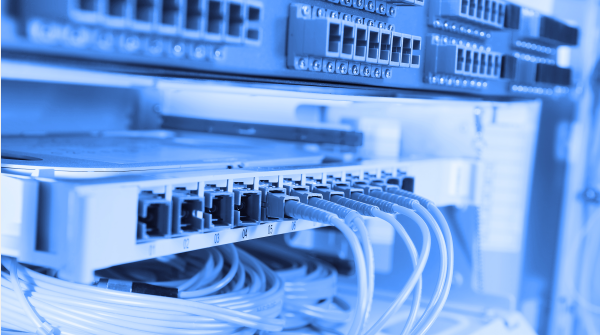Four trends that will happen in the telecom industry in 2023

Four trends that will happen in the telecom industry in 2023

Pay more attention to data
Telecom players such as T-Mobile, Globe Telecom, and Telia use data and artificial intelligence (AI) to improve customer experience and automate activities. However, there is still a lot of untapped potential in this industry. As third-party cookies are phased out, first-party data sources will become even more valuable if they are managed in the customer's best interest.
Telecom companies have massive amounts of data, but most of it is scattered and isolated. For example, operational data is stored on a variety of traditional technologies (such as 3G or 4G) and platforms, including operations support systems (OSS) and business support systems (BSS). Additionally, many ISVs along the telecom value chain maintain their data in walled gardens. This makes it difficult to integrate, manage and share data across the organization.
Data grid architecture can help unleash telecom data. A data grid enables each domain-driven dataset to be considered a product and owned by a data-savvy team. The data is then shared into a centralized catalog where it can be leveraged to deliver transformational business outcomes.
Data grids also ensure that business units have the right tools for the job. For example, it enables non-data scientists to build, train and deploy machine learning (ML) models, increasing adoption of ML across the organization, accelerating innovation and enriching customer experience.
Sustainability and energy costs top the agenda
As energy costs rise, reducing usage and improving sustainability will be at the top of the agenda, and data-driven approaches can help with these efforts.
According to a report by the European Telecommunications Network Operators Association, the global telecommunications industry generated 2.6% of the world's total carbon dioxide (CO2) emissions in 2020, higher than the aviation industry.
According to GSMA Intelligence, energy consumption accounts for 15-40% of telecom operators' operating expenses in 2021 and is expected to rise. For mobile network operators, the majority of energy consumption (60-75%) comes from the radio access network (RAN).
Data traffic loads are intermittent, which means that different parts of the RAN can briefly go into sleep mode, even during traffic peaks, to reduce energy consumption. For example, a mobile network operator in Australia was able to reduce power consumption by more than 7% by simply switching off the power amplifier symbol at one site without causing any service degradation. By using data and AI/ML applications, telcos can use smart services to monitor and automate this process.
Moving to the cloud can further save energy. Multiple studies by 451 Research, an international analytics firm owned by S&P Global Intelligence, found that migrating on-premises workloads to AWS can reduce a workload's carbon footprint by nearly 80%.
We have already seen telcos embrace the cloud, such as Vilma in Sweden, Spark and DISH in New Zealand. In addition, innovations in 5G core processors can reduce energy consumption. For example, in Japan, NTT Docomo and NEC achieved an average 72% reduction in power consumption compared to existing x86 processors.
As networks mature, more collaborations will foster the development of the 5G ecosystem
Over the past few years, we've heard the promise of additional revenue from 5G, but haven't seen the windfall yet. 2023 will mark the beginning of a turning point.
All major U.S. carriers have deployed 5G across the country. In Europe, 34 of the 50 European countries have deployed 5G, and 14 in the Asia-Pacific region, according to another GSMA report. Devices are catching up, too, with the top smartphones of the past few years all supporting 5G.
The final hurdle to realizing 5G's potential is the ecosystem—creating the cross-industry and cross-functional partnerships needed for 5G services and reducing barriers to building and managing 5G networks.
Private wireless holds great promise for 5G industry use cases. IDC estimates that dedicated LTE/5G wireless TAMs will reach $8.3 billion by 2026. But adoption of the technology has been slower than expected, in part because of the high cost and complexity of planning, building, deploying and managing private networks. By 2023, expect more telcos to form partnerships to boost adoption, just as Verizon and Vodafone teamed up to accelerate edge computing.
Transformation of Telecom Enterprises
The fourth trend in the coming year will be the accelerated evolution of telecom companies to "technology companies", which will change the relationship between telecom companies and customers, and how to obtain new revenue through operations.
There are two aspects to this shift.
First, telcos need to transform from connectivity providers into digital service providers, leveraging their networks to enrich relationships with customers. For example, SK Telecom in South Korea is transforming into an artificial intelligence enterprise. Switzerland-based Swisscom is expanding the value it offers customers by training technical and commercial staff to advise and consult on their cloud journeys.
Second, telcos will need to transform the way they operate, using their network as a platform. This method will provide a new way to make money for its network building, and create a new MVNO in a few days, even with only 10,000 users, it can be profitable.
Embracing these four trends will not be easy, as it will require upskilling and training of employees and, more importantly, commitment from leadership. But telcos that make this shift will be better equipped to unlock new growth and adapt to innovation.